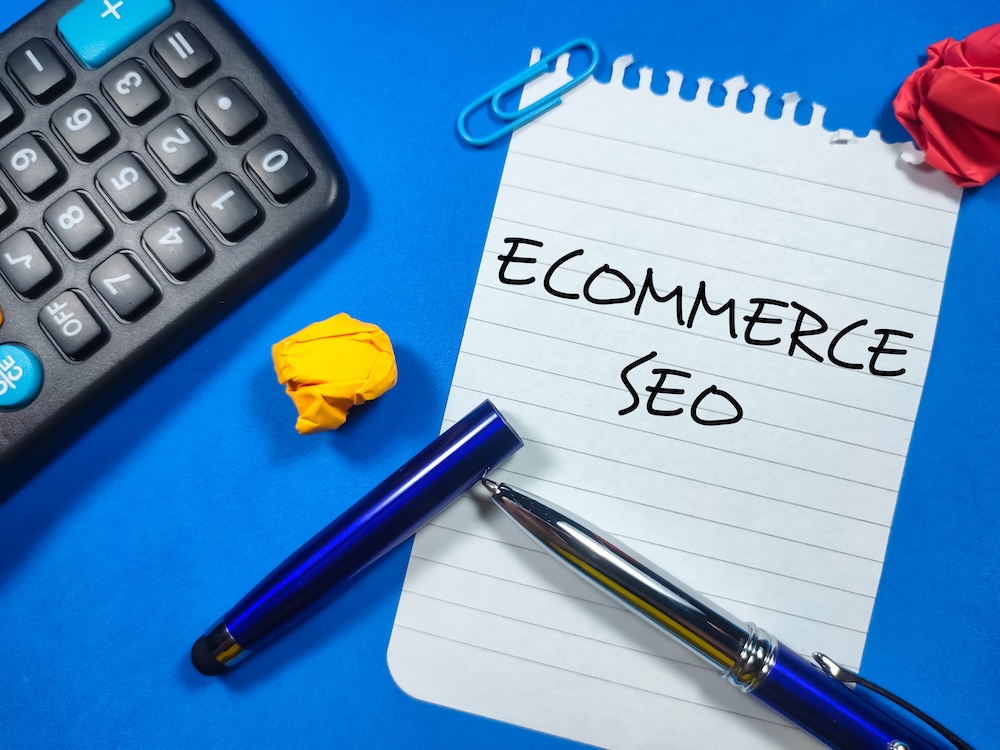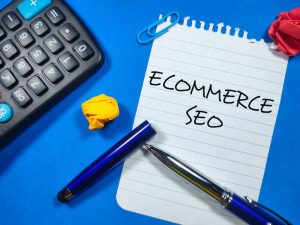What is E-commerce SEO and Why is it Essential?
E-commerce SEO, or search engine optimization for online stores, is the process of improving your online shop’s visibility on search engines like Google, Bing, and Yahoo. Think of it as prime digital real estate; if your products aren’t showing up on page one, you’re basically invisible. This visibility is crucial because, let’s face it—online competition is fierce. Without effective SEO, your store risks drowning in the digital ocean, overshadowed by competitors who rank higher and attract the lion’s share of organic traffic.
Why is this essential? Simple: better visibility equals more clicks, more clicks lead to more conversions, and ultimately, more revenue. E-commerce SEO ensures your products are easily found by potential customers right when they’re ready to buy. Unlike paid ads, which vanish as soon as you stop paying, a solid SEO strategy brings sustainable, long-term traffic growth, boosting your brand credibility and customer trust. Whether you run a small boutique or a massive online marketplace, mastering SEO isn’t just beneficial—it’s mandatory to thrive in today’s digital-first market.
Understanding How E-commerce SEO Works
When you’re selling online, understanding how e-commerce SEO functions under the hood is crucial. Essentially, search engines like Google use complex algorithms to evaluate websites and determine their ranking in search results. These algorithms focus on factors such as content relevance, site structure, user experience, and backlinks.
Firstly, let’s talk relevance. Google’s primary goal is to serve users content that precisely matches their search intent. This means your product pages must align with specific queries customers type when they’re ready to buy. To achieve this, you’ll need to master keyword research. Tools like Google Keyword Planner and SEMrush can help you identify high-conversion keywords relevant to your products. The trick is to pick keywords with decent search volume but lower competition. Incorporate these keywords naturally into your titles, descriptions, URLs, and even image alt texts.
Next up is your site’s structure and user experience. Imagine your website as a brick-and-mortar store; if it’s messy, customers won’t stick around. The same applies digitally—poor navigation and slow loading times lead to high bounce rates, signaling to search engines your site isn’t user-friendly. A clear, intuitive site structure helps search engines crawl your site efficiently, indexing pages faster and accurately categorizing your products. Additionally, optimizing your website’s speed is critical. According to Google, even a one-second delay can decrease conversions by up to 20%. Tools like Google PageSpeed Insights and GTmetrix provide insights and recommendations to improve your loading speed.
Backlinks also play a significant role. Search engines view backlinks as votes of confidence—other credible websites pointing to yours tells Google your content is valuable. However, not all backlinks are created equal. Quality beats quantity every time. Aim for authoritative backlinks from reputable blogs, industry websites, and even social media platforms.
Lastly, mobile optimization isn’t just a bonus; it’s essential. With over half of all e-commerce purchases now happening via mobile, according to Statista, ensuring your site performs flawlessly on smartphones is crucial. Google prioritizes mobile-friendly websites, and a poor mobile experience will tank your rankings quickly.
In a nutshell, e-commerce SEO works by aligning your site’s content with user intent, maintaining an impeccable site structure and user experience, acquiring quality backlinks, and staying mobile-friendly. Remember, SEO isn’t a set-it-and-forget-it strategy; it’s an ongoing process requiring regular tweaks and updates to keep up with evolving algorithms and user expectations.
Key takeaway:
Master the key factors of e-commerce SEO—relevant content, strong site structure, mobile optimization, and quality backlinks—to significantly boost your visibility and conversions.
Building a Solid Foundation: Technical SEO for E-commerce
Technical SEO might not sound glamorous, but without a solid technical foundation, your e-commerce site’s beautiful design and engaging content won’t count for much in Google’s eyes. Think of technical SEO as the engine under the hood; if it’s poorly maintained, your shiny car won’t run smoothly—or in this case, rank well.
Optimizing Site Structure and Navigation
A clean, logical site structure is fundamental. Good navigation doesn’t just benefit your customers—it helps Google bots crawl and index your site effectively. Organize your site with a clear hierarchy: categories, subcategories, and product pages. Avoid deep nesting; ideally, your customers should reach any product within three clicks from the homepage.
Your URLs should also reflect this logical structure, making them easily readable by both users and search engines. Here’s an example of an optimized URL structure:
www.yourstore.com/category/subcategory/product-nameThis URL clearly indicates the content hierarchy and enhances keyword relevance. Avoid URLs that look like gibberish—customers and crawlers both dislike cryptic, lengthy URLs stuffed with irrelevant parameters.
Enhancing Site Speed and Performance
Site speed is crucial. Users today are impatient—if your pages load slower than three seconds, expect to lose nearly half your visitors, according to Google’s data. Optimize images, minify CSS and JavaScript files, leverage browser caching, and consider using a Content Delivery Network (CDN). Services like Cloudflare or AWS CloudFront can significantly boost your loading times worldwide.
You’ll also need to enable HTTPS if you haven’t yet. Security is non-negotiable for e-commerce. HTTPS not only encrypts sensitive data, protecting your customers’ personal information, but it’s also a ranking signal for Google. Trust badges and clear security certificates help reassure customers and decrease cart abandonment.
Handling Duplicate Content Issues
Duplicate content is an e-commerce SEO nightmare. Product descriptions from manufacturers, pagination issues, and similar products create duplicate content, which can confuse search engines and lower your ranking potential. Combat this by creating unique descriptions for each product—even slight rewrites can make a big difference. Additionally, leverage canonical tags to indicate the primary page when similar or identical content exists. Google’s guidelines on duplicate content offer comprehensive advice on using canonicalization effectively.
Structured Data and Schema Markup
Implementing structured data using schema markup makes your products stand out with rich snippets—reviews, pricing, availability, and product images right in the search results. Schema markup helps search engines understand your content better, improving click-through rates significantly. Google’s Structured Data Markup Helper makes this task easier, even if you’re not a coding expert.
Technical SEO sets the stage for your online store’s long-term success. If done correctly, it dramatically improves how search engines perceive your site, leading to higher rankings, more traffic, and ultimately, increased sales.
Key takeaway:
Prioritize technical SEO—fast-loading pages, optimized structure, and secure browsing—to ensure your site meets both user expectations and Google’s requirements.
Keyword Research and Optimization for E-commerce
Keyword research is the backbone of any successful e-commerce SEO strategy. If technical SEO is the engine, keywords are the fuel that powers visibility and drives sales. Finding and optimizing for the right keywords isn’t just about traffic—it’s about getting targeted traffic from users who are ready to convert.
How to Identify High-Converting Keywords
Start by putting yourself in your customers’ shoes. Ask yourself, “If I were buying this product, what would I type into Google?” Don’t just rely on basic keywords—also consider long-tail phrases, which typically have lower search volume but higher conversion rates. For example, instead of targeting the highly competitive keyword “running shoes,” you could use “best trail running shoes for women.”
Tools like Ahrefs Keyword Explorer or Ubersuggest can simplify this process. These tools help you uncover search volume, keyword difficulty, and even the keywords your competitors rank for. Always aim for a balance between search volume and competition. High volume, highly competitive keywords are tough to rank for, while low competition keywords often yield quicker results.
Optimizing Keywords on Product and Category Pages
Once you’ve nailed down your keywords, strategically place them throughout your product and category pages. Ensure your primary keyword is prominently included in these key areas:
-
Title Tags: The title tag should clearly describe the product and include your target keyword naturally. Keep it engaging to encourage clicks.
-
Meta Descriptions: Although not a direct ranking factor, a compelling meta description with your keyword can significantly improve click-through rates.
-
Headers (H1, H2): Your main keyword should ideally appear in the H1 header. Use secondary or related keywords in H2 or H3 headings.
-
Product Descriptions: Integrate your keywords naturally into descriptions. Avoid keyword stuffing—Google penalizes it, and readers hate it. Your descriptions should feel conversational, helpful, and informative.
-
Image Alt Text: Optimize alt text with your primary or related keywords. This helps with image searches and provides additional context to search engines.
Leveraging Semantic and LSI Keywords
Google’s algorithm has evolved significantly, now favoring content that naturally includes related terms, known as Latent Semantic Indexing (LSI) keywords. LSI keywords aren’t synonyms, but they’re closely related words or phrases that give context to your primary keywords. For example, for “organic coffee,” LSI keywords might include “fair trade,” “arabica beans,” or “coffee brewing methods.” Tools like LSI Graph can help you identify relevant semantic keywords to enrich your content and demonstrate topical relevance to search engines.
Competitor Analysis for Keyword Insights
Keep your friends close, and your SEO competitors closer. Analyzing competitors provides invaluable insights into keyword opportunities you might’ve overlooked. Identify your top competitors by searching your key products or categories, then use SEO tools to examine their ranking pages. Notice patterns: Are there keywords consistently used across high-ranking competitor pages that you haven’t utilized?
Use tools like SpyFu or SEMrush Competitive Research to spy on your competition. Identify gaps and opportunities, then optimize your content accordingly. Competitor insights help you understand exactly what is working in your niche, saving you time and effort on guesswork.
Tracking and Adjusting Your Keyword Strategy
SEO isn’t a “set-it-and-forget-it” game—regularly monitor keyword performance. Tools like Google Search Console and Google Analytics provide comprehensive data on keyword effectiveness, including click-through rates and conversions. Pay attention to keywords bringing in traffic but low conversions; tweak your pages to better align with user intent, adjusting your content strategy accordingly.
Key takeaway:
Perform meticulous keyword research focusing on high-conversion, long-tail keywords. Continuously optimize, measure, and adapt your strategy to stay ahead of competitors and attract quality traffic.
On-Page SEO Strategies for Product Pages
Optimizing individual product pages is crucial for ranking higher and increasing conversions. Your product pages aren’t just listings—they’re your sales reps, tirelessly working 24/7. Make each page count.
Crafting Compelling Meta Titles and Descriptions
Your meta titles and descriptions serve as first impressions. Make them clear, concise, and compelling to grab attention. For example:
-
Title: “Organic Cotton Yoga Pants | Sustainable Comfort for Yoga Enthusiasts”
-
Description: “Explore our soft, breathable organic cotton yoga pants designed for ultimate comfort and sustainability. Perfect for yoga, workouts, or leisurewear.”
Ensure your primary keyword naturally fits here, making it immediately clear to users and search engines what the page is about.
Writing Product Descriptions that Sell and Rank
Product descriptions should balance persuasive copywriting with SEO best practices. Don’t copy manufacturer descriptions—Google dislikes duplicate content, and unique content boosts credibility. Tell a story about your product, highlight its features and benefits, and make it conversational.
Use bullet points to emphasize key features clearly, helping both readability and scannability:
-
Made from 100% organic materials.
-
Machine washable, durable fabric.
-
Available in multiple colors and sizes.
Include relevant LSI keywords naturally throughout the text, enriching context and relevance.
Utilizing Structured Data (Schema Markup)
Structured data significantly enhances your product page visibility. Implement schema markup to showcase key details like price, ratings, and availability directly in search results. Rich snippets improve click-through rates by making your product listings visually appealing and informative.
Google’s Structured Data Testing Tool can help validate your schema markup and ensure your pages qualify for rich snippets. This step can dramatically increase traffic and conversions without additional advertising expenses.
Image Optimization Techniques
High-quality images are crucial for e-commerce sales but can slow loading times. Optimize images for faster load speed without compromising quality. Compress images using tools like TinyPNG or ImageOptim, and always include descriptive alt text using relevant keywords to improve accessibility and search rankings.
Encouraging User-Generated Content (UGC)
Incorporating customer reviews, ratings, and Q&A sections boosts trust and enhances page relevance. Reviews add unique content to your pages, increasing keyword relevance naturally. Moreover, positive reviews act as social proof, significantly improving conversions. Encourage customers to leave reviews through email follow-ups or incentives like discounts on future purchases.
Key takeaway:
Create product pages that blend engaging, SEO-friendly content with structured data, optimized images, and user-generated content. Each product page should clearly communicate value, credibility, and relevance, turning visitors into buyers.
Content Marketing for E-commerce SEO
When done right, content marketing isn’t just an SEO tactic—it’s your secret weapon for standing out in a crowded online market. Great content builds authority, generates organic traffic, and converts visitors into loyal customers. Let’s dive into how you can leverage content marketing effectively for your e-commerce site.
Leveraging Blogs and Guides to Boost SEO and Sales
Blogs and buying guides aren’t just fluff—they’re powerful tools that attract potential buyers at different stages of the buying journey. Customers often search for information before making a purchase, so your goal is to become their go-to resource. Think beyond generic posts; offer genuinely helpful content, such as how-to guides, detailed product comparisons, or expert tips related to your products.
For instance, if you’re selling running shoes, consider content like “A Beginner’s Guide to Choosing Running Shoes,” or “5 Common Running Injuries (and How to Avoid Them).” This type of content attracts targeted organic traffic, positions you as an authority, and nudges visitors toward your products.
Ensure every piece of content is optimized for relevant keywords and links naturally to your products or category pages, making it easy for visitors to transition from informative content to purchase-ready product pages.
Integrating Video and Visual Content for Maximum Engagement
Visual content—particularly videos—massively boosts engagement and can significantly enhance your SEO efforts. In fact, according to a study by Animoto, 73% of consumers are more likely to buy after watching a product video. Incorporate short, engaging product demonstrations, unboxings, or tutorials into your pages. Host videos on platforms like YouTube, which itself is the second-largest search engine, to further amplify your reach.
Embed these videos within relevant product pages and blogs, optimizing titles, descriptions, and tags with targeted keywords. High engagement signals, such as increased dwell time and decreased bounce rates, indicate to Google that your content is valuable, directly boosting rankings.
Visual content also extends beyond videos. Infographics, charts, and image galleries that illustrate product features or comparisons enhance user experience. For example, a detailed infographic comparing different models of headphones could significantly simplify a user’s buying decision and increase conversions.
Promoting Your Content Strategically
Creating high-quality content is just half the battle—promoting it effectively completes the strategy. Utilize email marketing, social media channels, and paid promotion tactics to amplify your reach. Sharing engaging snippets or intriguing questions linked to your content on social media platforms like Instagram or Facebook encourages clicks and shares.
Additionally, guest posting on reputable industry blogs helps drive relevant traffic back to your site and enhances your backlink profile. Aim for authority sites in your niche, ensuring the audience aligns closely with your products.
Measuring Content Success and Adapting Your Strategy
Consistently monitor the performance of your content. Use analytics tools like Google Analytics to track metrics such as page views, dwell time, bounce rate, and conversions. Adjust your content strategy based on this data; replicate successful formats and topics while revising underperforming content.
High-performing content can also be repurposed. Turn your best blogs into videos, infographics, or social media posts to get more mileage out of your efforts.
Key takeaway:
Strategic, SEO-focused content marketing drives targeted traffic, builds brand authority, and boosts conversions. Always track, analyze, and iterate your content strategy for sustained success.
Link Building Strategies Tailored to E-commerce
In the fiercely competitive world of e-commerce SEO, backlinks can make or break your site’s visibility. Effective link-building strategies enhance your site’s authority, significantly improving rankings and driving quality traffic.
Proven Tactics for Acquiring Quality Backlinks
Acquiring quality backlinks demands a strategic approach. Not every link is beneficial; relevance and authority matter greatly. Here are proven tactics you should leverage:
-
Influencer Collaborations and Reviews: Partnering with influencers can get your products featured on high-authority blogs or social media channels, resulting in valuable backlinks and increased visibility.
-
Creating Exceptional, Shareable Content: Crafting unique content like ultimate guides, original research, or visually appealing infographics naturally attracts backlinks. Websites will reference your content if it adds value to their readers.
-
Resource and List Pages: Reach out to blogs and websites that publish industry-specific resource lists or “best-of” roundups. Politely request your content or products be featured, highlighting the value their audience would gain.
-
Guest Blogging: Write guest posts for authoritative industry blogs. Each guest article gives you the opportunity to link back naturally to relevant product pages, driving targeted traffic.
Avoiding Common Link Building Pitfalls
Link building is rewarding but filled with potential pitfalls. Avoid shortcuts like buying backlinks or spammy tactics—Google’s algorithm swiftly penalizes these practices. Always prioritize relevance and quality over quantity. Carefully evaluate every backlink opportunity, and never participate in link schemes or networks that promise quick results but damage credibility long-term.
Regularly audit your backlink profile using tools like Ahrefs or Moz Link Explorer. Disavow low-quality or harmful backlinks using Google’s Disavow Tool.
Turning Mentions into Backlinks
If your brand or products are already mentioned online without linking back, capitalize on this by politely requesting the publisher to add a link. Use tools like Google Alerts or Mention to monitor brand mentions regularly.
Key takeaway:
Effective link building prioritizes quality, relevance, and natural acquisition methods. Regularly audit and adapt your strategy to avoid penalties and boost SEO performance.
Monitoring and Measuring E-commerce SEO Success
Measuring your SEO performance is essential. Without tracking, your strategy is guesswork, leaving success to chance. Set clear KPIs to measure effectiveness clearly:
-
Organic Traffic Growth: Measure organic traffic growth via Google Analytics. Steady growth signals strong SEO health.
-
Conversion Rate: Monitor how traffic translates into sales. High organic traffic but low conversions might indicate poor content alignment.
-
Bounce Rate and Dwell Time: Low bounce rates and high dwell times demonstrate user satisfaction, directly influencing your SEO rankings.
-
Keyword Rankings: Track key product keywords regularly using Ahrefs Rank Tracker or similar tools.
-
Revenue from Organic Traffic: Ultimately, track revenue specifically attributed to organic traffic. This metric clearly indicates your SEO’s ROI.
Regularly analyzing and responding to these metrics ensures your SEO strategy remains effective and responsive to market changes.
Key takeaway:
Continuously track critical metrics and adapt your SEO strategy accordingly to sustain and improve your online store’s SEO performance.
Common Mistakes in E-commerce SEO (and How to Avoid Them)
Even the savviest marketers can slip up when optimizing their online stores. These SEO pitfalls can significantly hamper your site’s performance, but luckily, they’re easy to avoid if you know what to look out for.
Duplicate Content: The Silent SEO Killer
Duplicate content is a pervasive issue in e-commerce. Many stores mistakenly reuse manufacturer-provided descriptions or unintentionally generate multiple URLs for the same product. Google views duplicate content negatively because it confuses crawlers and dilutes your site’s authority.
How to avoid it:
-
Always write unique product descriptions. Even slight rewrites can dramatically improve your SEO.
-
Implement canonical tags to indicate preferred versions of duplicate pages clearly.
-
Regularly audit your website using tools like Screaming Frog to identify and rectify duplicate content issues swiftly.
Ignoring Mobile Optimization: Missing Half Your Audience
With nearly 60% of online searches conducted on mobile devices, failing to optimize your online store for mobile users is essentially leaving money on the table. Slow load times, unresponsive layouts, and frustrating navigation instantly deter users, hurting your rankings and conversions.
How to avoid it:
-
Prioritize responsive web design to ensure a seamless experience on all devices.
-
Utilize Google’s Mobile-Friendly Test to identify mobile optimization issues quickly.
-
Compress images and simplify layouts to speed up page load times significantly.
Neglecting Product Page Updates: Stale Content Costs Sales
Outdated product pages negatively affect your SEO and conversion rates. Customers and Google both prefer fresh, relevant content. Neglecting updates makes your store look inactive, hurting trust and rankings.
How to avoid it:
-
Regularly update product descriptions, images, pricing information, and availability.
-
Keep seasonal promotions and inventory adjustments current, making sure your site accurately reflects what’s available.
-
Implement structured data to display real-time availability, price changes, and reviews directly within search results.
Poor Internal Linking: Weakening Your Site’s Authority
A poorly planned internal linking strategy wastes ranking potential. Strong internal links help users navigate your site easily, distribute page authority evenly, and reinforce topical relevance.
How to avoid it:
-
Strategically link related products, categories, and blogs using relevant anchor text.
-
Regularly audit internal links to eliminate broken links that can frustrate users and confuse search engine crawlers.
-
Employ breadcrumb navigation to help users and crawlers understand your site’s structure better.
Failing to Optimize for User Intent: Missing the Conversion Mark
Not understanding your customer’s search intent leads to mismatches between their expectations and your content. Even high rankings won’t save you if visitors bounce because your pages don’t meet their expectations.
How to avoid it:
-
Deeply understand your target audience’s motivations, desires, and needs when searching.
-
Optimize your content to match informational, navigational, transactional, or commercial intents clearly.
-
Regularly analyze user behavior through tools like Hotjar or Google Analytics to refine your approach continually.
Key takeaway:
Avoid common pitfalls—duplicate content, ignoring mobile optimization, outdated content, poor internal linking, and misunderstanding user intent—to ensure optimal SEO health and maximize conversions.
Future-proofing Your E-commerce SEO Strategy
SEO isn’t static—it’s always evolving. To sustain long-term success, your strategy must anticipate and adapt to the continuous changes of search engine algorithms and user behaviors.
Staying Ahead of Algorithm Updates
Google’s algorithms regularly change, impacting your site’s rankings overnight. Staying informed and agile is critical. Monitor reputable SEO news sources like Search Engine Journal or Moz’s Google Algorithm Change History.
-
Perform regular SEO audits to swiftly adapt your site following updates.
-
Prioritize core web vitals—page speed, user experience, and interactivity—as Google increasingly emphasizes these factors.
Leveraging Emerging Trends and Technologies
Future-proof your e-commerce site by embracing emerging SEO technologies and trends:
-
Voice Search: Optimize for conversational queries and long-tail keywords reflecting natural speech patterns.
-
AI and Machine Learning: Utilize tools leveraging AI to automate SEO tasks, analyze vast data sets, and predict consumer trends.
-
Visual Search: Optimize images with descriptive filenames, alt tags, and structured data to capture users who prefer visual queries.
Prioritizing User Experience (UX)
Google increasingly ties SEO success directly to user experience. Sites that offer seamless navigation, fast loading times, high-quality content, and effortless purchasing processes will always outperform competitors.
-
Regularly conduct UX audits, involving actual user testing to identify improvement areas.
-
Ensure your checkout process is frictionless—complex checkouts directly hurt conversions and rankings.
Continuous Learning and Adaptation
Commit to ongoing education. SEO evolves continuously, requiring perpetual learning, testing, and adaptation. Participate in industry forums, webinars, and courses regularly to keep your skills razor-sharp and your strategies cutting-edge.
Key takeaway:
Embrace continuous learning, agility, and user-centric optimization to adapt proactively to changes, ensuring your e-commerce SEO strategy remains effective long-term.
Quick Summary:
-
E-commerce SEO helps your online store gain visibility, attract targeted traffic, and boost conversions and revenue.
-
Technical optimization, keyword strategy, compelling content, and strategic link-building are pillars of a successful e-commerce SEO approach.
-
Staying aware of SEO pitfalls—like duplicate content, mobile optimization, and user intent—is crucial to maintaining rankings.
-
Ongoing measurement and agile adaptation to algorithm changes ensure your long-term SEO success.
FAQs:
-
How important are customer reviews for e-commerce SEO?
-
Reviews significantly boost SEO by adding unique content, increasing relevance, and building trust, which enhances conversion rates.
-
-
Can social media activity influence e-commerce SEO rankings?
-
Indirectly, yes. Strong social signals can increase brand visibility, leading to higher traffic, shares, and backlinks.
-
-
Should I delete discontinued product pages from my store?
-
Not necessarily. Instead, redirect discontinued product pages using 301 redirects to relevant active pages or categories.
-
-
How does seasonality impact my e-commerce SEO strategy?
-
Seasonal trends require updating keywords, creating timely content, and promoting seasonal products to capture traffic spikes effectively.
-
-
Is local SEO relevant for my e-commerce business?
-
Absolutely, especially if you have a physical presence. Local SEO strategies can drive nearby customers to your online or physical store.
-







